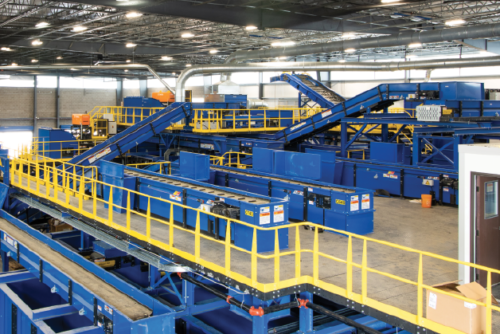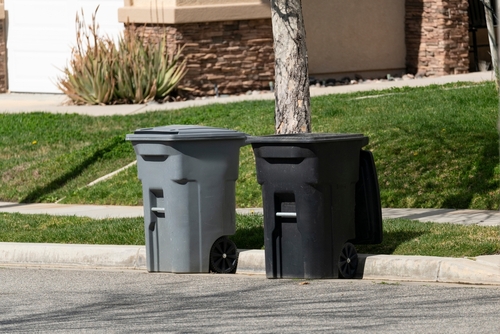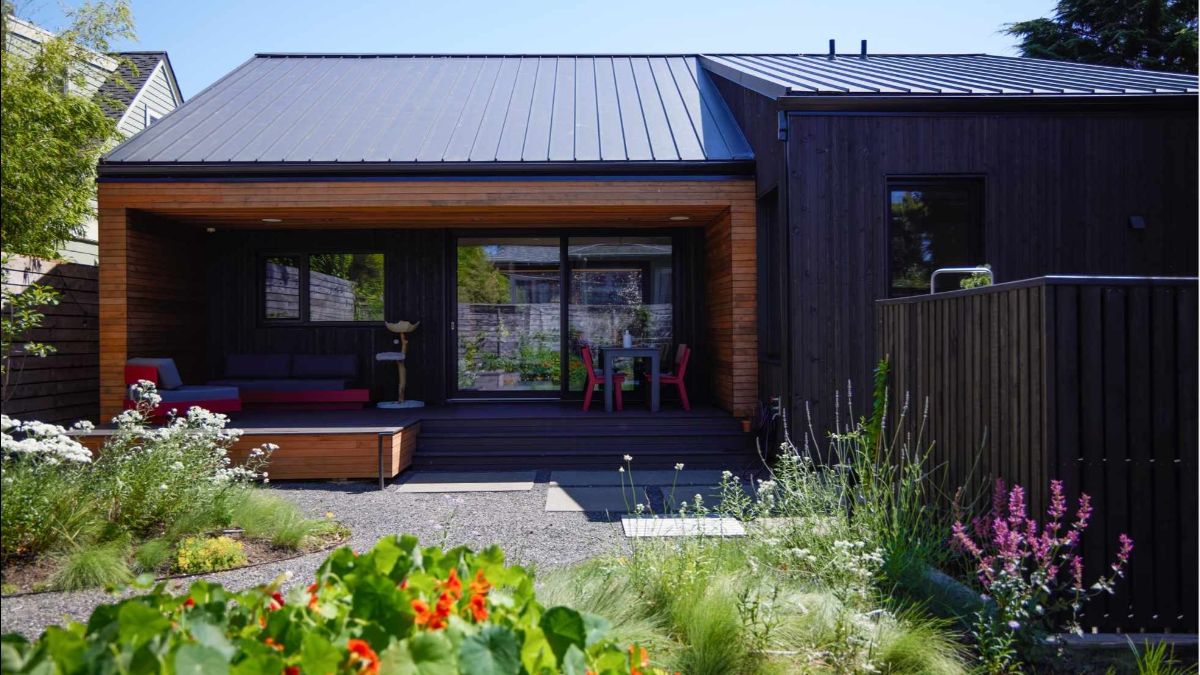Mar 17, 2025 | Community, Education, News

On July 1 of this year, Oregon will become the first state in the U.S. to launch a new recycling plan that will:
- expand the number of things most of us can recycle,
- provide residential recycling pickup service to city and rural customers in all parts of the state,
- require owners and managers of multi-unit housing to provide recycling for residents,
- improve public education about recycling,
- require certification of recycling operations to verify that their products are really being recycled,
- enable upgrades to the facilities that process recycled materials, and
- require producers of plastic and paper products to form a Producer Cooperative through which they will pay part of the cost of recycling, enough to provide funding to enable recycling facilities to upgrade equipment and make up for fluctuations in market prices,
- spur changes in packaging as manufacturers discover that making packaging easy to recycle saves them money.
For collectors, materials recycling facilities, final processors and especially manufacturers of plastic packaging and tableware, that means quite a change is coming. This bill will require manufacturers to share the cost of recycling plastics and paper products as well as help support and stabilize the recycling markets.
In 2021, the Oregon Legislature passed the law that created this change (SB 582), officially named the Plastic Pollution and Recycling Modernization Act. Oregon was the first state that addressed the issue. Since then, four others have signed packaging Extender Producer Responsibility (EPR) bills into law—Maine, Colorado, California and Minnesota. The law required the Department of Environmental Quality (DEQ) to draft rules to implement it by 2024. DEQ met that deadline, and since then it has been soliciting comments from the participants to ensure that the rules would be practical and that the companies affected by the bill would be able to comply.
Now DEQ has set the date when the new law will take effect: July 1, 2025.
In compliance with the new law, manufacturers that produce $5 million or more worth of paper, packaging and food serviceware have formed their Producer Responsibility Organization in Oregon called the CAA. Manufacturers will pay into the CAA, which will distribute the funds to the Materials Recovery Facilities and end recyclers to pay for upgrades to their equipment, which they will need to ensure the material they sell back to recycling process plants is clean, uniform and free of dirt, grease or food particles that would contaminate it and prevent recycling.
To understand how important this new system is, it helps to trace the path of the things we place in our curbside bins through their journey to becoming new products. Republic Services picks up our bins from the cans we place in front of our homes and takes the contents to a recovery facility (MRF) on Swan Island run by a company called EFI. EFI buys the mixed material that we put in our cans from Republic, separates them into newsprint, office paper, corrugated cardboard (OCC), milk and soup boxes, glass bottles, plastic bottles and batteries.
Once the items are separated, EFI sells each material to a different recycling plant, such as a local cardboard mill, the mixer that breaks down milk cartons or the big plastic pellet manufacturers in the midwest and east coast. At each of those buy-sell points, prices vary according to several factors, among them the cleanliness of the goods, supply and demand for them and uniformity over a group of loads.
Oregon’s new law will boost recycling work around the state by ensuring that separation facilities like EFI and Pioneer, who buy the recycled material we place in our cans, can sell their separated products on the market, regardless of price fluctuations. Under the new law and with their new equipment, separation yards such as EFI and Pioneer will be able to meet the standards of their customers, who often refuse shipments of separated materials because they are too dirty to process or don’t meet other specifications.
Summary of the Law
The act requires producers with annual sales of $5 million or more to form a Producer Responsibility Organization (PRO) that will fund improvements to the system and ensure the recyclables that are collected go to responsible end markets.
The producer responsibility organization (the CAA in Oregon) will use producer membership fees to ensure better and expanded recycling services. It will also fund waste prevention grants and studies to assess challenges and recommend solutions to improve recycling in condos and apartment complexes, equity in the recycling system, as well as clean up litter and marine debris.
The State of Oregon will establish one statewide list of what can be recycled by the franchised garbage haulers like Republic so that individuals and businesses can recycle the same items everywhere in the state.
Local governments, especially in rural areas, will expand their recycling services with direction and support from the PRO, and cities will do the same for people living in apartments and condos. The same private collection companies (i.e., garbage haulers) will continue to provide curbside pickup for recycling in cities where they already do that – including in Lake Oswego.
PRO(s) will create accessible educational resources that local governments can use to discourage contamination and encourage recycling
Processing of recyclable materials will be done in facilities that meet new performance standards, including material quality, reporting and paying living wages to facility workers. These facilities will be required to obtain permits from DEQ or meet similar standards before they can receive recyclable material from Oregon communities.
End markets that can handle the material appropriately – without creating plastic pollution – can purchase the materials that these facilities process and recycle them into new products. Producers will be obligated to make sure materials collected in Oregon reach responsible end markets.
Oversight and Integration
A new governor-appointed advisory council will provide feedback to DEQ and the PRO(s) about important elements of this new recycling system, including the statewide collection list. DEQ will oversee the recycling system and provide enforcement where necessary. The PRO(s), processors and local governments will track and report more and better information about where our recyclables go and provide assurance that they are used to make new products.
Mar 13, 2025 | Community, Education, News

By Susan Mead, LOSN Volunteer
The Lake Oswego garbage, recycling and yard debris with food waste rates have increased as of February 2025. The new rates are available to review at the city’s website: https://www.ci.oswego.or.us/recycle/garbage
There are several ways you can lower your monthly cost and take advantage of free services:
- If you have weekly service for a 65-gallon or 90-gallon trash roll cart and do not fill it more than half full every week.
SOLUTION: Consider going to a smaller roll cart from what you currently have. A 35-gallon trash roll cart service is almost 50% cheaper than the two largest sizes.
- If you have weekly service for the smallest roll cart (35-gallon) and usually don’t fill it.
SOLUTION: There are two great options if you already have the smallest roll cart. Consider getting a plastic insert in your 35-gallon roll cart to qualify for 20-gallon weekly trash pick-up, saving you 25% over your current bill. Alternatively, you can switch to a pick up of the 35-gallon roll cart once every 4 weeks, saving you over 40% compared to weekly pickup.
- You want to keep weekly service at your current roll-cart size because you put food waste in your yard debris bin and it gets too dirty/stinky.
SOLUTION: Did you know that Republic Services will swap out your yard debris roll cart once a year for free? Additional cleanings are available for a fee, but that fee may be less than you pay monthly for the larger trash roll cart.
- If you travel more than three weeks at a time you can put your trash service on hold for a vacation credit while you are away.
SOLUTION: As long as you reach out to Republic Services ahead of your next service date and inform them of the weeks that you will not need services. You can put your trash/recycling service on hold and receive a vacation credit for the period you are skipping service if you are requesting it for at least three weeks in a row, up to 4 times in a calendar year. Note: Vacation credits will not be applied to Multi-family or Commercial customers.
In any of the scenarios above, the frequency of service and size of the recycling and mixed yard waste roll-carts do not change. Even if you cut your trash service to monthly, the other carts will still be picked up weekly.
- If you need to keep your current size of trash roll cart because so much plastic is not recyclable in the curbside bin. Are there any options for this waste?
SOLUTION: In fact, there are places to take those non-curbside plastics both in Lake Oswego and in nearby jurisdictions. One recently opened location you can bring non-curbside plastics is the James Recycling Depot, located on Beaverton-Hillsdale Highway. Hours are limited, but they do open one Saturday every month. You can drop off clear plastic bags at nearly every supermarket, as well as clear plastic to-go containers (#1 PET) at any New Seasons location.
Finally, how do you make any of the changes suggested here? You can call Republic Services at 503-636-3011 or 844-737-8254 and request any changes you would like. Please note that the phone customer service hours are 7:30 AM – 5:30 PM Pacific Time Monday through Friday.
Jul 1, 2024 | Community, Education, Past
 |
|
|
|
Ever Wonder What Happens to Your Curbside Trash and Recycling? Now you can find out!
|
|
Please join the LOSN Materials Management Action Team for a 60-min tour of the material recovery facility operated by our residential hauler, Republic Services in Wilsonville.
|
|
Republic Service’s Materials Recovery Facility Tour
Friday Aug 9, 2024 ⋅ 11:30am – 12:30pm (Pacific Time – Los Angeles)
10295 SW Ridder Rd, Wilsonville, OR 97070, USA
|
|
|
 |
There is a maximum of 30 participants who can attend. Please RSVP to Susan Mead at semead90@gmail.com. If you are interested in carpooling, please let Susan know.
Tour details:
- Be sure to allow enough time to arrive for the tour start at 11:30 AM. Approiximately 30 minutes should be adequate from downtown Lake Oswego.
- To join the walk-through of the facility, you must wear close-toed shoes. All needed personal protective equipment will be provided by Republic Services.
|
|
May 1, 2024 | Community, Education, Schools
|
 |
|
|
Sustainability in Lake Oswego Schools
The Lake Oswego School District (LOSD) has embraced sustainability in many different ways – in its curriculum, in its new facilities, and as one of the four key pillars in its strategic plan. In this month’s newsletter, we’re sharing sustainability highlights from the 2023-24 school year.
|
|
|
Sustainability Curriculum
For the second year, Lakeridge and Lake Oswego high schools have offered elective classes on sustainability. Both high schools also have green teams to help promote sustainability within their school communities.
Testimony from LOHS student Brody Trost:
“My name is Brady Trost, and I was in Mrs. Foster’s Sustainability class this year. The Sustainability class is super fun, you go on a lot of field trips and learn a lot about the environment. Earlier in 1st semester, our class went to the PAE building in Portland. The building was an incredibly sustainable building, and they filtered their own water for consumption. Many people in the class said that the water tastes especially good there. Our class also went to Forest Hill Elementary as our final, and we got to read the students a book called We Are Water Protectors by Carole Lindstrom. The book talks about water and how Native American people wish to protect their water. Our class was lucky to read this book to two 5th grade classes… Overall, Sustainability is a really fun class, and you can make new friends.”
|
|
 |
Pictured above: Lake Oswego High School’s solar flower, greenhouse and garden.
|
|
Testimony from LOHS student Lyra Johnson:
“My name is Lyra Johnson, and I’m this year’s Green Team president. Green Team is the LOHS environmental activism club, focused on service, stewardship and environmental education. I joined the club in my freshman year while looking for something to do during the pandemic, and have found that the events, activities and opportunities it offers provide huge relief against climate anxiety and hopelessness. From regular land tending events, where we pull ivy, pick up trash and plant native species, to educational opportunities around the community (such as the annual Tree Summit on November 4, where I met so many inspiring individuals crafting havens of biodiversity in their own backyards), Green Team allows students to contribute in whatever capacity interests them.”
Lakeridge High School opened its greenhouse and agricultural spaces in fall 2023. Thanks to a collaboration between Marketing and Farm to School, students in the class sell vegetable starts and vegetables that they grow in their campus farm beds.
Sustainability curriculum has also expanded to elementary and middle schools. All 5th graders participate in place-based Healthy Waters walking field trips from their individual campuses that are provided by the Oswego Lake Watershed Council. The gardens were refurbished at Lake Grove Elementary while Westridge Elementary designed and built new gardens.
Both middle schools will add a garden/horticulture elective this fall.
|
|
|
|
With the end of the school year fast-approaching, community members interested in helping tend school gardens during the summer should email LOSN Board Member, Stephanie Wagner, at stephanie@natureed.org.
|
|
|
|
|
|
|
|
|
|
|
Pictured above: Raised beds and outdoor classroom at River Grove Elementary.
|
|
|
|
|
River Grove’s Path to Net Zero
River Grove Elementary will raise the District’s goal for resilience to a new level. The structure is designed to a high seismic importance factor as a Category IV building that can offer shelter and emergency services to the neighboring community in the event of a seismic or other natural disaster.
|
|
 |
In a region previously known for successful passive design projects, Oregonians are having to adjust to a new normal of annual forest fire activity and record-setting heat waves. In response to the changing climate conditions, the River Grove design incorporates a fully electric, sophisticated ventilation and cooling system that, when fully operational, will have a net zero energy use. A collaboration between the school district and PGE enabled the design team to innovate further by developing a microgrid design, one of the first schools in America to feature this innovation. This design actively supports the state’s effort to reach zero carbon energy production by 2040.
How River Grove Will Achieve Net Zero by 2040
- Fully electric mechanical and plumbing systems
- 150 kW photovoltaic solar array on the rooftop provides approximatley 10% of annual energy consumption
- On-site battery energy storage system (BESS) reduces peak electrical load demands when the utility grid is strained and at its highest carbon impact
- Emergency power is provided by a combination of BESS and diesel generator power for community resilience
- Dedicated Outside Air Systems (DOAS) deliver filtered outside air and remove unwanted air throughout the building
- High-efficiency air cooled chillers produce medium temperature chilled water to cool classroom and admin spaces
- Commons and gym are served by single zone high-efficiency packaged heat pumps to provide space conditioning and ventilation
- HVAC systems in the gym and commons are provided on standby power so these spaces can continue to operate in case of prolonged loss of power
- Hot water is created using heat pump water heaters
|
|
All Lake Oswego Schools Are Certified Oregon Green Schools
- Installation of the photovoltaic solar array at Lakeridge Middle School was completed this year, and it is expected to produce 213,000 kWh hour annually
- Hallinan Elementary received upgrades to lighting, roof and wall insulation and hydro pumps and boilers
- Oak Creek Elementary received energy efficient upgrades such as new boilers, wall insulation, high efficiency windows, and high efficiency lighting with occupancy sensors
|
|
|
Sustainability: a Strategic Pillar
The most recent Lake Oswego School District strategic plan adopted by the School Board identifies sustainability as one of its four key pillars. Two years ago, the School Board created advisory committees made up of students, staff, parents and community members for each of its strategic pillars.
Last year, the Sustainability Advisory Committee drafted a sustainability lens to complement the DEI (Diversity, Equity and Inclusion) lens. The district has started using the lens to help guide its decision making. For example, they used it this year when they adopted the new science curriculum.
The committee was also asked by the School Board to update the district’s sustainability policy to make it consistent with the strategic plan. The committee has completed its work and has forwarded the updated policy to the School Board for adoption.
An interesting activity initiated by the Sustainability Advisory Board was a sustainability survey created by the student members. Initially the intent was to solicit feedback on the sustainability policy from middle school students. But as they worked on writing it, they broadened the scope of the survey to focus on understanding where and how students learned about sustainability. In its final form, the survey was given not only to middle school students, but to high school students, teachers, and non-teaching staff as well. Below are highlights from 1,000 respondents:
|
|
|
|
|
|
|
|
|
|
|
|
|
Students learned about sustainability from a variety of classes. In addition to Science classes. Health, English, and Social Studies were important sources for learning about sustainability.
|
|
|
|
|
|
|
|
|
|
|
Teachers and Staff shared how they used content with their students to explore concepts. Their actions were wide reaching, and they looked for opportunities to integrate sustainability within their curricula.
|
|
|
|
|
|
|
|
|
|
|
|
|
|
|
Sustainable School Events
|
|
Third Annual Lake Oswego Sustainability Resource Fair
Students from both high schools participated in the third annual Lake Oswego Sustainability Resource Fair (LOSRF) at Lakeridge Middle School. Sustainability classes, Green Teams, Farm to School, and Sustainable Sewing clubs made connections with one another and the community. It was a great opportunity for students to demonstrate their commitment to sustainability and to show people how they are working for sustainable schools in LOSD.
|
|
 |
Pictured above: Lakeridge High School Farm to School students sell plant starts.
|
|
|
|
|
|
|
|
|
|
|
|
|
Clothing Drive and Share Day
Lake Oswego High School’s Sewing Club and Sustainable Fashion Club collected gently used clothing from their fellow students for two weeks. During lunch, they shared the clothing with their peers. It was the second annual event, and they plan to keep going for years to come.
|
|
|
|
|
|
|
|
|
|
|
|
|
|
 |
Earth Week Celebration
The LOHS Green Team planned and coordinated a week-long series of events in April. The goal was to bring students together with the common goal of learning, sharing, and doing service. Events included Land Tending, a showing and discussion of “Atomic Hope,” the Lake Oswego Sustainability Resource Fair, and the Asian Cultural Festival. They capped off the week with a picnic to celebrate in the outdoor classroom.
|
|
|
|
|






















